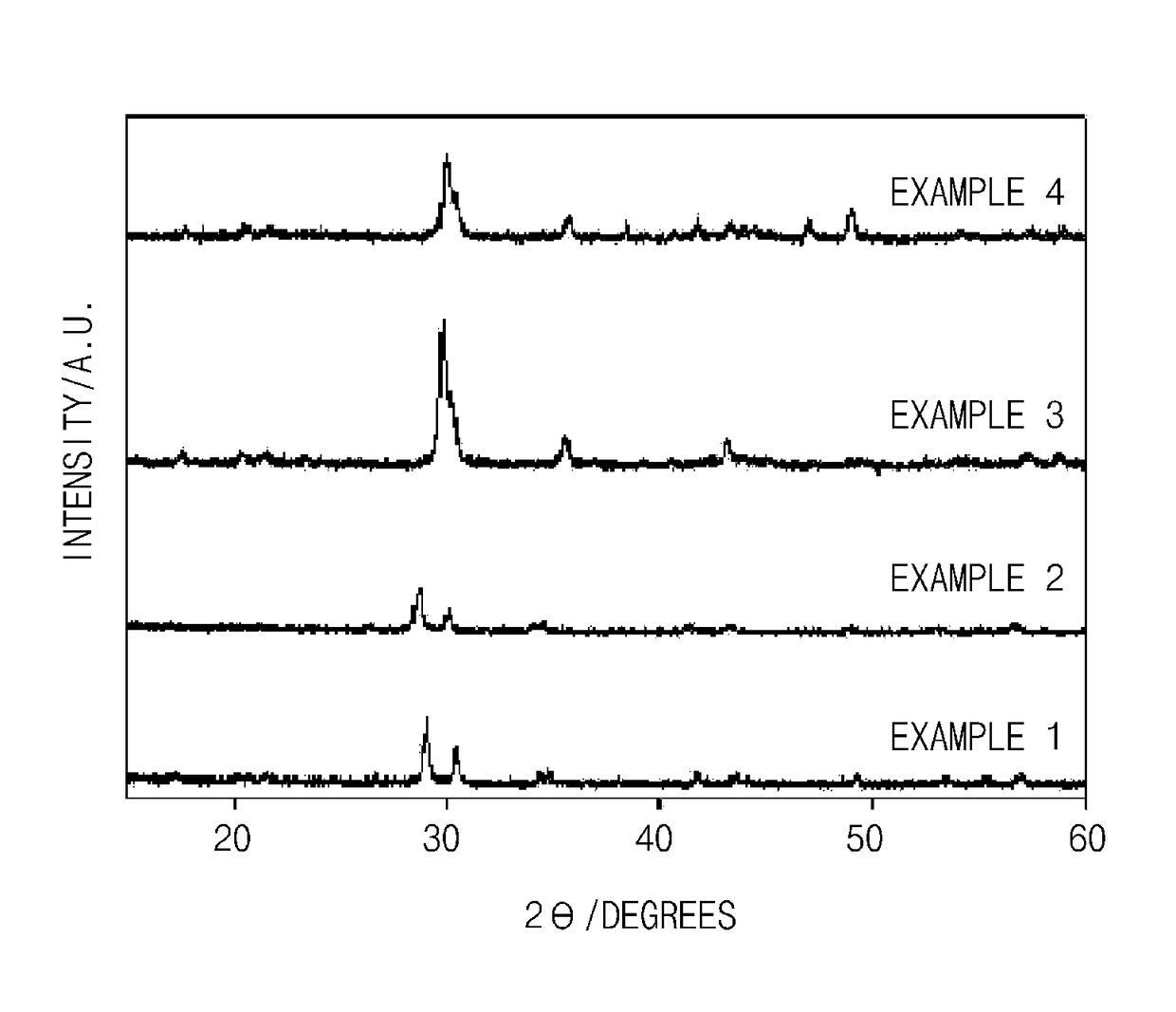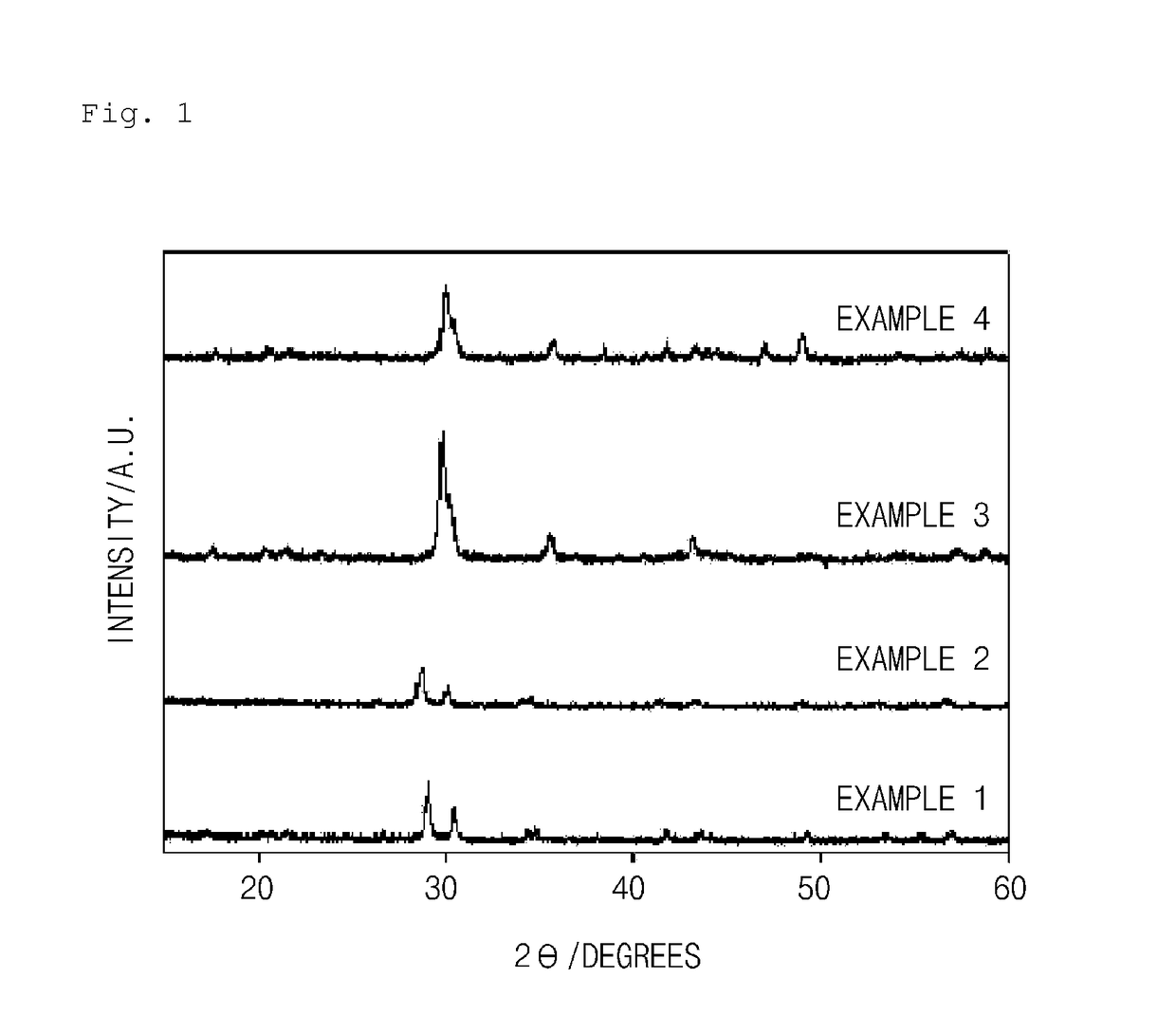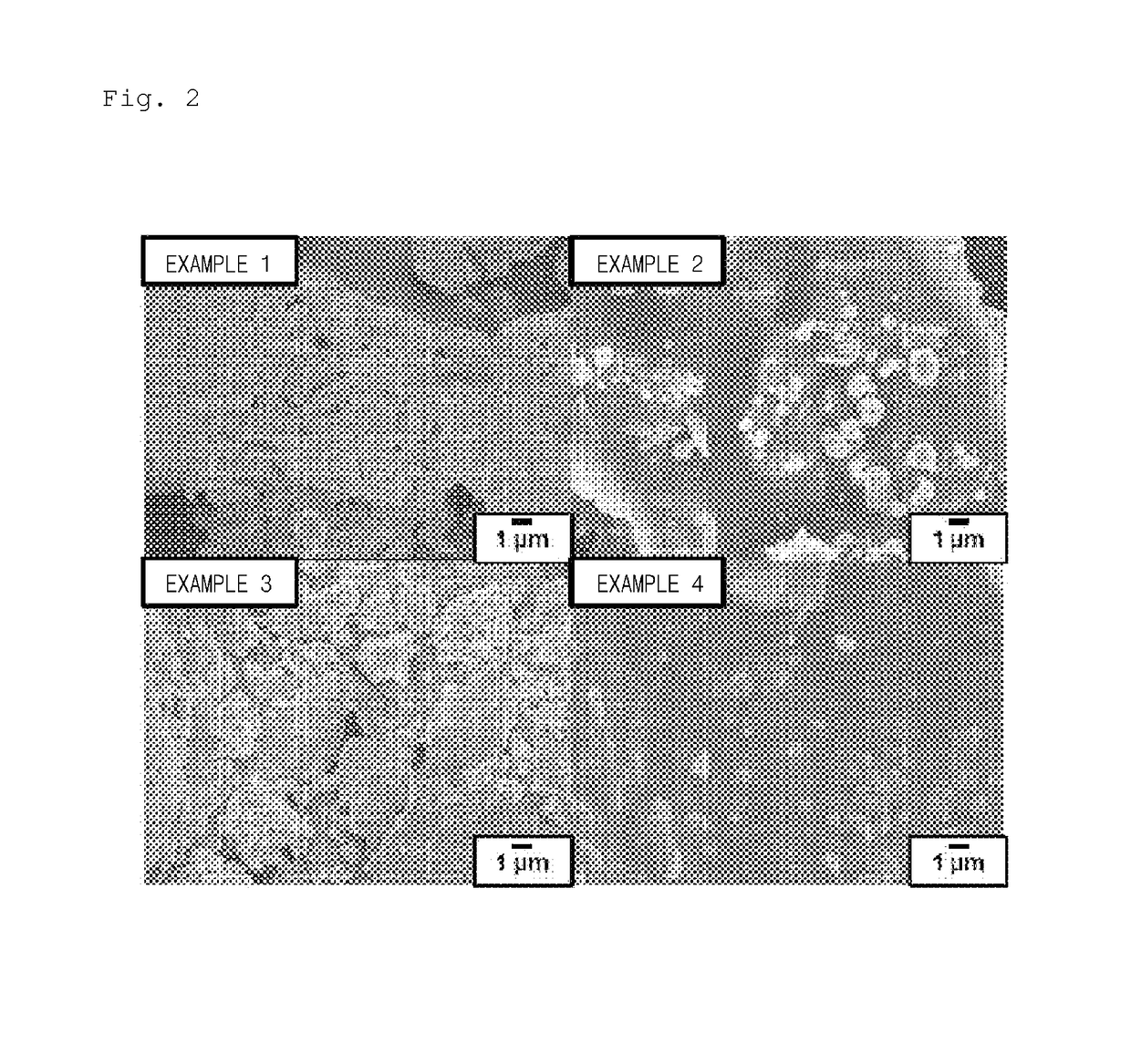Transition metal-pyrophosphate anode active material, method of preparing the same, and lithium secondary battery or hybrid capacitor including the anode active material
a technology of transition metal pyrophosphate and anode active material, which is applied in the direction of cell components, electrochemical generators, transportation and packaging, etc., can solve the problems of low initial efficiency of limnpo, mn may not easily react with lithium, and low conversion efficiency of limnpo/sub>4, etc., to achieve excellent conversion reactivity, improve capacity characteristics, and reduce electrode resistance
- Summary
- Abstract
- Description
- Claims
- Application Information
AI Technical Summary
Benefits of technology
Problems solved by technology
Method used
Image
Examples
example 6
on of Coin-Type Half Cell
[0106]The Mn2P2O7 prepared in Example 1 as an anode active material, carbon as a conductive agent, and polyvinylidene fluoride (PVdF) as a binder were mixed at a weight ratio of 80:10:10, and the mixture was mixed with a N-methyl-2-pyrrolidone solvent to prepare a slurry. One surface of a copper current collector was coated with the prepared slurry to a thickness of 30 μm, dried, and rolled. Then, an anode was prepared by drying at 120° C. in a vacuum oven for 12 hours or more.
[0107]The anode thus prepared was used to prepare an electrochemical cell. A lithium foil was used as a counter electrode. 1.3 M LiPF6 / ethylene carbonate (EC):ethylmethyl carbonate (EMC) (volume ratio 3:7) was used as an electrolyte to prepare a coin-type half cell in an argon atmosphere glove box.
examples 7 to 10
oin-Type Half Cells
[0108]Coin-type half cells were prepared in the same manner as in Example 6 except that the transition metal-pyrophosphates prepared in Examples 2 to 5 were used instead of using the Mn2P2O7 prepared in Example 1.
Experimental Example 1: X-Ray Diffraction Analysis
[0109]An X-ray diffraction (XRD) analysis (Bruker AXS D4-Endeavor XRD) was performed to identify crystallinity of the anode active materials of Examples 1 to 4 prepared according to the present invention, and the results thereof are presented in FIG. 1.
[0110]Specifically, applied voltage and applied current were respectively set as 40 KV and 40 mA. A measurement range of 2θ was between 10° and 60°, and the XRD measurement was performed by step scanning at an interval of 0.05°. In this case, a variable divergence slit (6 mm) was used and, in order to reduce a background noise due to a polymethyl methacrylate (PMMA) holder, a large PMMA holder (diameter=20 mm) was used.
[0111]As illustrated in FIG. 1, it may ...
experimental example 2
oscope (SEM) Image Analysis
[0114]An SEM image analysis was performed on the anode active materials of Examples 1 to 4, and the results thereof are presented in FIG. 2.
[0115]As illustrated in FIG. 2, since the transition metal-pyrophosphates prepared in Examples 1 to 4 were synthesized by a solid-phase method, micron-sized irregular particles were generally formed.
PUM
| Property | Measurement | Unit |
|---|---|---|
| diffraction angle | aaaaa | aaaaa |
| diffraction angle | aaaaa | aaaaa |
| particle diameter | aaaaa | aaaaa |
Abstract
Description
Claims
Application Information
 Login to View More
Login to View More - R&D
- Intellectual Property
- Life Sciences
- Materials
- Tech Scout
- Unparalleled Data Quality
- Higher Quality Content
- 60% Fewer Hallucinations
Browse by: Latest US Patents, China's latest patents, Technical Efficacy Thesaurus, Application Domain, Technology Topic, Popular Technical Reports.
© 2025 PatSnap. All rights reserved.Legal|Privacy policy|Modern Slavery Act Transparency Statement|Sitemap|About US| Contact US: help@patsnap.com



